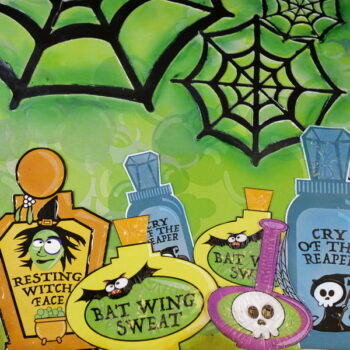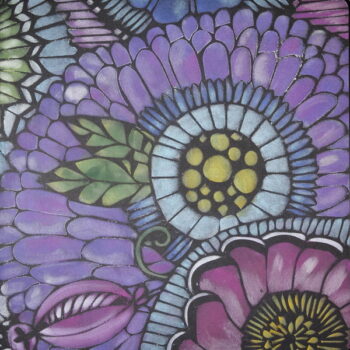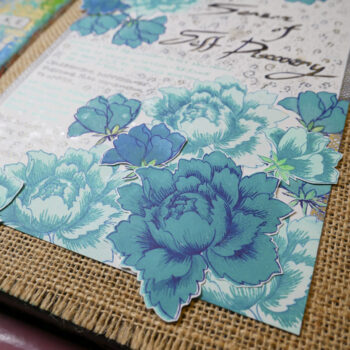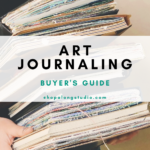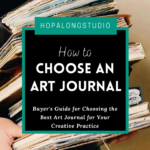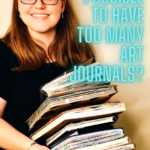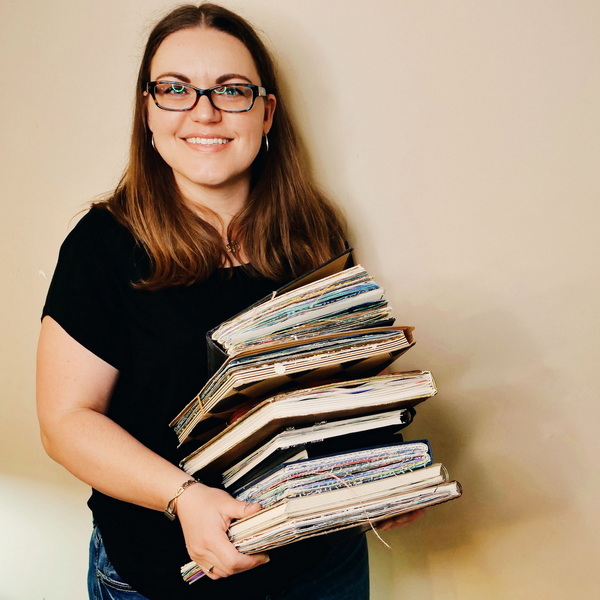
Choosing an Art Journal for Your Creative Practice
Choosing the right art journal for your creative practice may seem overwhelming. There are so many types of journals available it can be hard to know where to start.
Today I’m sharing a few things to consider when choosing an art journal for your creative practice. I’ll also share some of my favorite art journals that I use for my projects. Whether you are drawing, stamping, painting, or collaging, there are a variety of art journals that will work for you.
Hop-A-Long Studio is reader-supported. When you buy through links on our site, we may earn an affiliate commission at no cost to you. Learn more.
Choosing an Art Journal
When choosing an art journal, it often comes down to personal preference. But there are few things to consider that make choosing the right an art journal much easier.
What Art Materials are you Using?
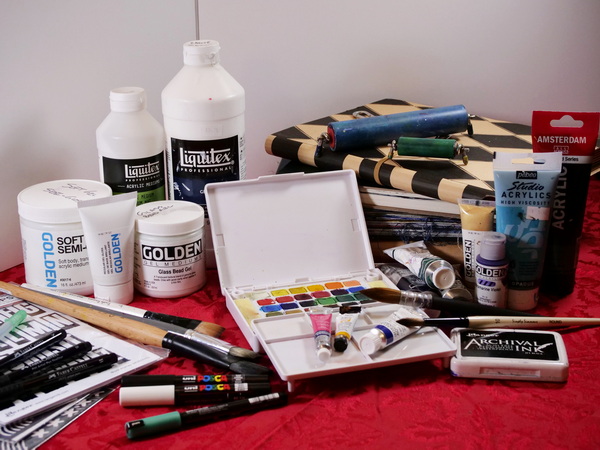
When choosing an art journal, you need to think about what materials you are creating with. Are you creating with dry mediums such as graphite, colored pencils, ink, and pastels? Or are you creating with wet mediums like acrylic paint, gel mediums and watercolor?
Generally, the wetter the medium, the heavier the paper you want to use in your journal. If you are unsure about what mediums you will use, try using a mixed media journal that will work with a variety of mediums.
Spiral or Bound Art Journal?
The two common art journal types are either spiral bound or sewn bound soft and hardcover books.
Spiral Bound Art Journal
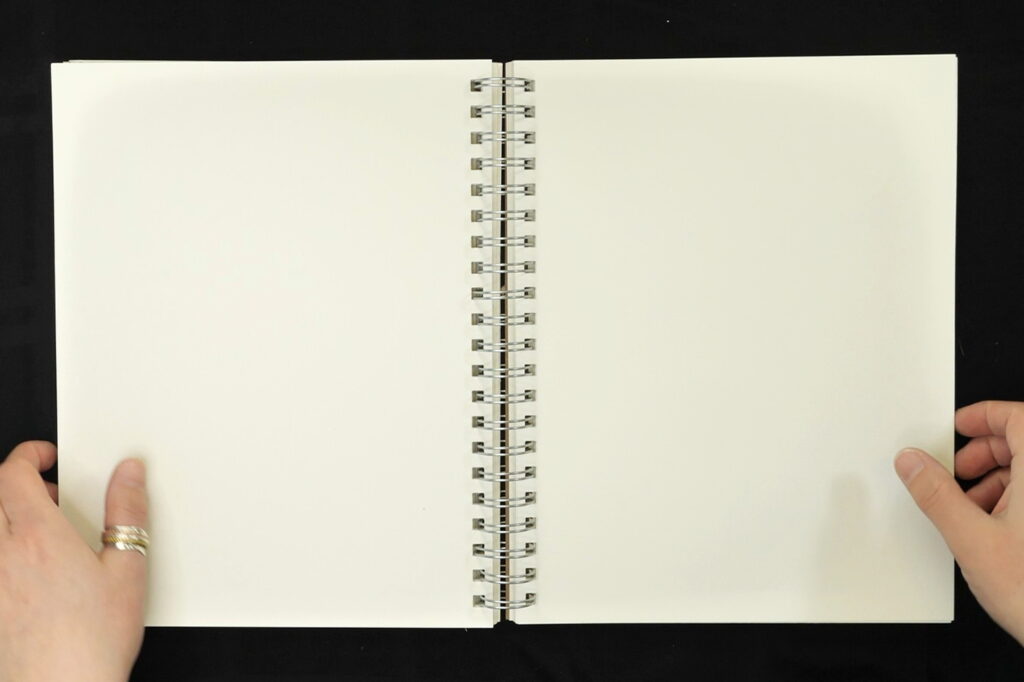
Spiral bound books are great as they lay flat. They generally have room for expansion in the spiral spine. This means that when you start adding heavier mediums and collage that will make the pages thick, the book has room to expand. Even in a full art journal the spiral bound book will generally lay flat. Spiral bound books also make it easy to remove pages which comes in handy if you ever want to frame your pages.
A drawback of spiral bound art journal is the spiral can get paint or ink on it while you work. This can cause bleeding onto other pages. This may detract from the creative process. One way I have solved this in my own art journal practice is by adding low tack painter’s tape or washi tape onto the spiral spine. This protects the spine from paint and ink while you work.
If you tend to do double page layouts, a book with a spiral spine may not be a preferred option. The spine breaks up your image and can make the images not look cohesive. I tend to only use my spiral bound art journals for single page projects.
Sewn Bound Art Journal
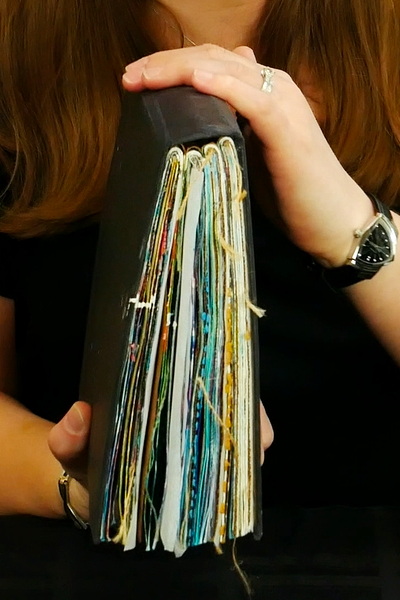
The sewn bound art journal is my preference as they tend to be hardcover, very sturdy and lay flat. The sewn binding makes the page spreads very cohesive and is perfect for double page layouts. I also prefer this style of art journal because I can paint across the page fold. I don’t have to worry about covering the spine before applying paint and ink.

One drawback of the sewn spine art journal is that the spine does not expand as the pages do. Personally, I don’t mind a little bit of fanning from my art journal. If this bothers you, you may prefer a spiral style art journal instead of a sewn bound journal.
Paper Type
It’s important to be aware of what type of paper is in your art journal. The paper types are unique but there are some general categories of paper that you will find in most art journals.
Smooth Paper
If you like to work with graphite, inks, stamping or any sort of ink blending, a smooth paper is your best choice. My favorite paper for this category is Bristol paper. Smooth paper will give you consistent results blending graphite and inks. The lack of texture on the paper prevents pen nibs from skipping over the surface or picking up fibers that may wreck your fine tipped pens.
Watercolor Paper
Watercolor paper is absorbent and meant specifically for watercolor painting. This paper works well for any wet mediums because it is meant to take a lot of water without warping.
Watercolor paper comes in a variety of types with the main categories being hot and cold press watercolor papers. Hot press watercolor paper is a smooth watercolor paper which is excellent for illustration, markers, and wet mediums like watercolor and acrylics. Because of the smoothness of the paper, it will not take as much wet medium as cold press watercolor paper.
Cold press watercolor paper has more texture than hot press watercolor paper giving it a more pebbled and rougher surface. It is meant to take and hold more water than hot press paper without buckling. This works well for acrylics and watercolor, but I would not recommend using it for illustration as it can be hard on your pens.
Mixed Media Paper
Mixed media paper is an excellent choice if you like to work with a variety of mediums in your art journal. This paper is smooth enough for drawing and inking, but strong enough to take acrylic and watercolor without much warping. It is meant to be an all-purpose paper to allow you to work with a variety of mediums with great results.
Mixed Media Surfaces
You can also purchase art journals that include surfaces such as canvas, denim or kraft paper. These surfaces are fun to use but take practice to get good results. They tend to absorb more paint and ink than the papers mentioned above. I tend to prepare these surfaces before adding mediums to get the best results.
Journal Size
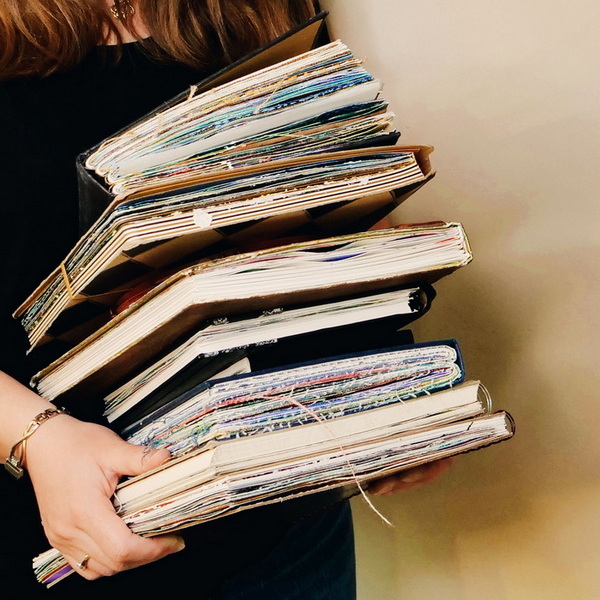
If you are new to art journaling, choose a smaller sized journal to get started. I have a variety of journals ranging from 3” by 4” up to 11” by 16”.
When starting an art journal practice, I would recommend having a journal no larger than 9” by 12”. The reason for this is to prevent feelings of overwhelm. Creating in large art journals requires more planning so by starting out with a smaller journal you will likely be happier with the results.
I often use large journals at home and use my smaller journals when I am out around the city or travelling. The smaller size is both portable and can help you get ideas and thoughts down quickly and decisively.
You may want to get a thick art journal with hundreds of pages, but I would suggest starting with a journal that has less pages. It will make completing a full book feel like a more achievable task and will prevent feeling overwhelmed.
Price Point
Art journals come at a variety of price points which is often influenced by the type of cover and the type of paper inside the book. Choose an art journal within your price range. I prefer to spend a bit more money on journals to get better paper, but this isn’t totally necessary to start art journaling.
More importantly, don’t purchase a journal that is so pricey that you won’t want to create in it. Or a book that you will only save for your “best art”. The idea is to get an art journal that you will love, pour hours of your time into, and love the process. If that ends up being a $5 or $50 art journal, choose whatever you can afford that will get you creating.
My Favorite Art Journals
There are so many options when choosing an art journal, and I’ve tried a lot of different ones. Here are my personal favorite art journals that I use in my creative practice.
Best Art Journal for Drawing and Ink
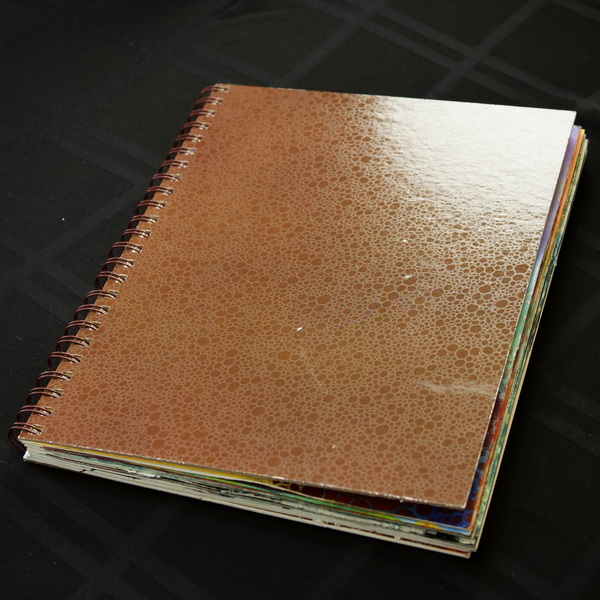
My favorite art journal for drawing and ink is the Strathmore Visual Journal. The visual journal comes in a variety of sizes from 5.5” by 8” up to 18” by 24”. This journal has a hard cover, spiral binding and is filled with Bristol paper. As the Bristol paper is very smooth, this gives you beautiful blends and shading and will not ruin your pens.
The Strathmore Visual Journal that I use is 9”x12” and I use it inking and drawing but also for acrylics, mixed media, collage, and watercolor. The paper will warp a bit with the wet mediums, but the paper is very strong so it will take the wet mediums and not fall apart.
Best Art Journal for Watercolor
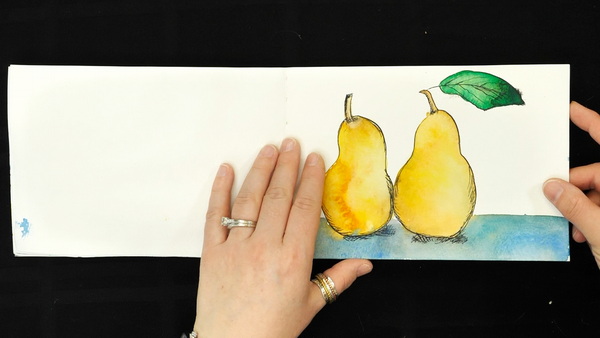
My favorite watercolor art journal is the Strathmore 400 Series Watercolor Journal. This journal has 140lb weight watercolor paper, which is sturdy, won’t warp, and works perfectly with watercolor paints and gouache.
If you are looking for a more economical watercolor paper, consider the Strathmore 200 Series paper. Strathmore does not sell this paper as an art journal, but it is a good quality student grade watercolor paper.
I purchase the Strathmore 200 series in large sheets and make my own art journals with this paper. If you are not quite ready to create in a journal yet or want watercolor paper for cards or to practice on, the Strathmore 200 Series is an economical option.
Best Art Journal for Mixed Media

Even though I use all my art journals for mixed media, my favorite mixed media paper journal is the Pentalic Nature Sketch Art Journal. This book has smooth mixed media papers that can handle watercolor, pens and inks very well. I tend to use this book for urban sketching, pen and ink drawings, as well as watercolor and ink drawings. A mixed media book like this will work well if you are starting out unsure of what art mediums you will use in your book.
Best Mixed Surfaces Art Journal
I love the novelty of having mixed surfaces in an art journal. When I first started art journaling, I used Dylusions and Dina Wakley Media Art Journals.
The Dylusions art journals come with smooth paper that works well for inks and drawing but also takes paints and mediums well. Just be aware that you will get some buckling when using wet mediums on this paper. These journals usually come with a cream-colored paper but are also available with black paper. My favorite of the Dylusions art journals comes with cream, black and kraft paper, interleaved through one journal giving me several creative options.

The Dina Wakley Media Journal has a combination of untreated canvas, watercolor, kraft and burlap pages. The Dina Wakley Blue Media Journal has a combination of denim, watercolor, and burlap surfaces.

I like these books for the mixed media nature of the surfaces, but I don’t like working with the watercolor paper in these books. The watercolor paper absorbs watercolor paint right away and doesn’t provide any working time. I tend to use the watercolor paper in this book for acrylic paintings and heavy mediums instead of watercolor painting.
Final Thoughts on Choosing an Art Journal
There are a lot of art journals available, but the key is finding a book that you will find fun to work in. You should love your art journal and enjoy the time you spend in it. Art Journaling is a beautiful self-care practice and a place to express yourself and learn art skills. No matter where you are in your creative journey, your art journal should inspire you to create.
Your Favorite Art Journal
What is your favorite art journal? I would love to know what art mediums you use and what type of art journal you create in! Leave a comment below and I would love to start a conversation with you.
My Favorite Art Journals
Koh-I-Noor Bristol Paper Journal
Strathmore 400 Series Watercolor Journal
Strathmore 200 Series Watercolor Paper



